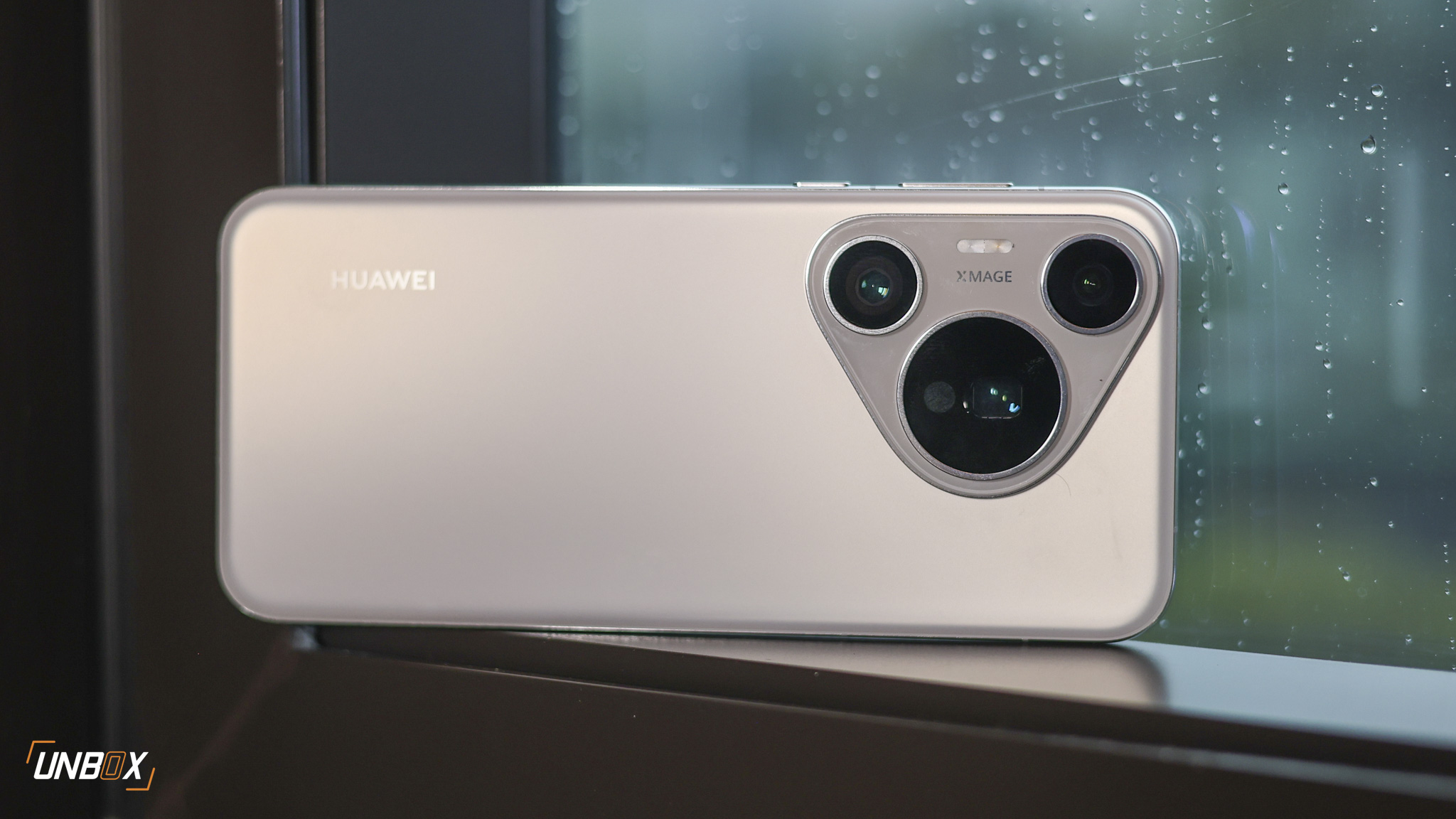We review the Xiaomi Mi 9!
Xiaomi’s always looking to undercut the prices of bigger, more established brands and their new budget flagship, the Mi 9, is looking to do exactly that. The new phone is the company’s first big budget flagship release for 2019, and if their other phones follow the same pricing and configuration strategy, Xiaomi is on track to become one of the biggest brands in the Philippines this year.

A design that’s more benign than its competitors
Xiaomi’s styling for their Mi 9 is a little more sedate compared to their more expensive rivals, with the phone sporting gentle curves and a more conservative color scheme, at least at first glance.

Tilt the phone to the light and you’ll see a subtle holographic pattern embedded in the glass, giving the phone a subtle visual boost depending on how you hold it.

The glass back curves in all directions, and seamlessly flows into the color-matched metal frame on the side. The phone’s glass rear is disrupted only by a vertically-arranged triple camera sensor that’s on the upper left side.
Surprisingly enough there aren’t any deep scratches on our review unit since it was supplied by Xiaomi Philippines without a box. Most of the time glass-backed phones lent to us usually get deep scratches if we run them without a protective case no matter how careful we are with them.
The volume and power button is on the right side of the phone, with a dedicated Google Assistant button located on the left side. The same side also holds the SIM tray.
On the bottom sits the USB Type-C connector and the speaker grilles. Like most of Xiaomi’s flagship phones, the Mi 9 doesn’t have a 3.5mm jack, which means you’ll have to rely on the phone’s Type-C 3.5mm adapter if you want to use a wired headset or use wireless headphones instead.
The only thing missing on the Mi 9 is IP resistance, which is still lacking on many of Xiaomi’s flagship offerings.

Punchy display has a fingerprint scanner
The Mi 9 uses a 6.39 AMOLED display with a full HD+ (1080×2340) resolution, topped with a small notch that houses the 20-megapixel f/1.9 selfie camera and protected by Corning’s Gorilla Glass 6.

The bezels are thin but don’t approach the razor-thin proportions on Huawei’s P30 Pro or Samsung’s Galaxy S10 Plus. The display is flat and not curved, though that might not be such a big deal for a lot of people.

From what we can see on the device, the display isn’t as punchy or as bright as the one on say, the Galaxy S10 Plus but that’s pretty much par for the course for a budget smartphone.

Xiaomi’s also included an in-screen fingerprint solution on the Mi 9’s display, which is fast becoming a standard feature on most flagships today. There’s also facial recognition tech on tap, though obviously, that’s not as secure as using the fingerprint solution.
Just like their other phones, the Mi 9 offers customization options for color temperature, as well as the ability to add or remove contrast depending on your taste.
One thing we really like about the Mi 9 is the always-on display. If you’re not familiar with it, the Ambient Display (Xiaomi’s branding for it) shows the time and whatever notifications you have on the display so you won’t have to waste time or battery lifting up your phone to check if someone messaged you. There’s a bunch of clock styles that you can choose from too, which is nice.

One of the most powerful Android smartphones to date
Powering the Mi 9 is Qualcomm’s top-tier processor, the Snapdragon 855 chipset. As of writing, it’s the only phone currently available in the Philippines with Qualcomm’s top-tier SoC, and currently sits on top of AnTuTu’s leaderboards.
The Qualcomm Snapdragon 855 chipset is extremely powerful, and Xiaomi has paired that chipset with 6GB of RAM and a choice of either 64GB or 128GB of storage.
As for actual benchmarks, the Mi 9 scores extremely high on AnTuTu, which pretty much means you can install any game on the phone without having to worry about system requirements.
The only issue we see here is storage space – 64GB of storage is a little low for a flagship phone, as we’re starting to see 128GB storage as the base for flagship devices. Since there are no expandable storage options on the Mi 9, space might become an issue if you spring for the lower-priced 64GB variant.
MIUI 10 is an improvement over the old skin
The Mi 9 runs Android 9.0 Pie, with Xiaomi’s MIUI 10 overlay running on top of it.
As far as overlays go, MIUI isn’t the best, but Xiaomi has improved the experience somewhat to try and court people who haven’t tried the brand before.
Features like Second Space, a walled-off partition of the UI that allows you to store and run apps without being seen by unwanted eyes is a welcome addition for the perenially paranoid. There’s a fair amount of bloatware on the phone which is a given, but these are things you can uninstall once you get the phone.

Cameras that are impressively good for the price
The Mi 9 sports three cameras on its vertically-stacked camera sensor. The top camera, surrounded by that halo ring is the 12-megapixel, 2x telephoto camera that’s powered by a Samsung S5K3M5 sensor. The middle is the 48-megapixel, f1/.75 aperture main camera with a 1/2-inch Sony IMX586 sensor (the same one on Honor’s View 20) and a 16-megapixel 117-degree wide-angle camera powered by Sony’s IMX586 sensor.
For a phone that retails under Php 25K, the Xiaomi Mi 9 produces excellent photos in bright light and adverse conditions, taking excellently detailed shots.
The Mi 9 allows you to shoot in 48-megapixels, though we achieved better photos when we allowed the phone to interpolate that into 12-megapixel images. In fact, two of the images we shot on 48-megapixel had issues in the photo – the one with the clouds had purple color aberrations in it, while the one with the flower had an unusually warmer tone than usual.
We were also pleasantly surprised to see Mi 9’s low-light performance. Images were taken in low light still had plenty of detail which was surprising.
All in all the phone’s cameras are insanely good for what you’re paying for.

Battery is a little small
The Xiaomi Mi 9 is powered by a 3300mAh battery inside of its glass body. We found the battery a little small, especially considering more and more flagships nowadays are coming with 4000mAh of juice inside of them.
Nevertheless, we managed to squeeze a day’s use with the Mi 9 with moderate usage, with around 20% of power left in the tank before we turned in for the night.
The Mi 9 has fast charging, going up to 18W with its wired charger. New this year is the phone’s wireless charging capability, which can go up to 20W using Xiaomi’s optional fast wireless charger.

Verdict: flagship phone with a price that’ll blow you away
The Mi 9 doesn’ deviate from Xiaomi’s brand promise one bit, offering excellent performance with a price that’s hard to ignore.
The Mi 9 might not be perfect, but it’s pretty hard to discount considering the competition at the same price range.
Xiaomi is pricing the Mi 9 at just Php 22,990 for the 6GB/64GB variant, and just Php 24,990 for the 6GB/128GB variant. That’s incredible value for a flagship, considering its rivals retail for twice the price – sometimes even higher.
Xiaomi Mi 9 (Global) specs
- AI-Powered Qualcomm Snapdragon 855 octa-core processor
- Adreno 640 GPU
- 6GB RAM
- 6.39-inch Full HD+ Super AMOLED display, 18:7.9 aspect ratio, support for DCI-P3, 60000:1 Contrast Ratio, Gorilla Glass 6 protection
- 128GB of non-expandable storage
- Triple rear camera setup: 48-megapixel f/1.75 Sony IMX586 main camera with 6P lens; 16-megapixel f/2.2 Sony IMX481 ultra-wide-angle camera with 6P lens, 4cm macro mode; 12-megapixel f/2.2 Samsung S5K3M5 telephoto lens with 2X zoom, Dual Pixel and Laser Autofocus, dual-tone flash, AI scene detection, and AI portrait
- 20-megapixel f/2.0 front camera with 1.8um pixels, AI Portrait, AI Beauty
- Dual SIM, with 4G LTE, LTE-A
- Dual Frequency GPS, GLONASS
- WiFi, Bluetooth 5.0, NFC
- In-display Fingerprint scanner, USB-C, Reading Mode 2.0, Game Turbo
- 3300mAh battery with 27W Quick Wired Charging and 20W Fast Wireless Charging
- Android Pie with MIUI 10























